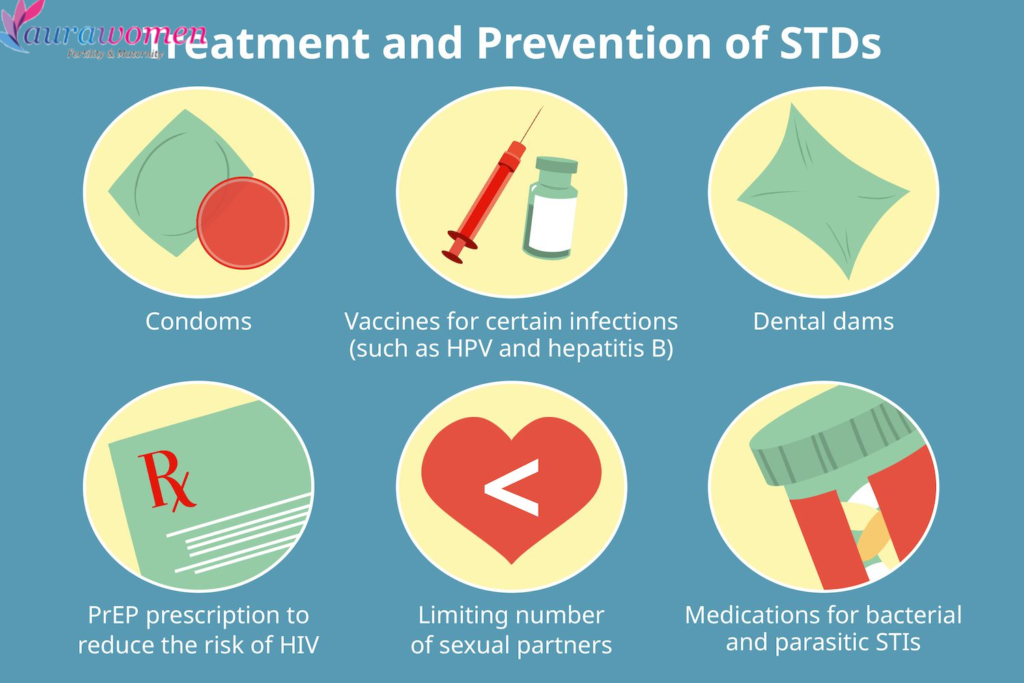
25 Sep Understanding Sexually Transmitted Infections (STIs)
1. What Are Sexually Transmitted Infections (STIs)?
Sexually transmitted infections (STIs) are infections that primarily spread through sexual contact. Bacteria, viruses, or parasites can cause them and can affect anyone, regardless of age or gender. Despite being preventable, STIs remain a significant public health concern due to the stigma surrounding them and the asymptomatic nature of many infections. It’s crucial to address the topic of sexually transmitted infections to promote awareness, encourage safe practices, and reduce their prevalence.
2. Types of Sexually Transmitted Infections

2.1 Bacterial STIs
Bacterial sexually transmitted infections include diseases like Gonorrhea, Syphilis, and Chlamydia. These infections can often be treated effectively with antibiotics if diagnosed early. However, untreated bacterial STIs can lead to severe health complications.
2.2 Viral STIs
Viral infections such as HIV, Human Papillomavirus (HPV), and Herpes are caused by viruses. Unlike bacterial STIs, viral infections may persist for a lifetime and require ongoing management rather than a cure. While some viral STIs like HPV can be prevented with vaccines, others, like HIV, require lifelong treatment.
2.3 Parasitic STIs
Parasitic infections, including Trichomoniasis, are caused by parasites and can typically be treated with medication. Parasitic STIs often have mild symptoms, which can make them harder to detect early.
3. How STIs Are Transmitted
Sexually transmitted infections spread through various forms of sexual contact. This includes vaginal, anal, and oral sex. Some STIs can also be transmitted through non-sexual means, such as from a mother to her child during childbirth or through shared needles. Proper knowledge of transmission methods can help in implementing preventive measures.
4. Symptoms of Sexually Transmitted Infections
4.1 Common Symptoms in Men
Men may experience symptoms like genital sores, unusual discharge, and pain during urination. Some STIs, such as Gonorrhea or Chlamydia, may initially present mild or no symptoms.
4.2 Common Symptoms in Women
Women might notice abnormal vaginal discharge, sores, and pelvic pain. Additionally, some STIs can lead to severe conditions like pelvic inflammatory disease (PID) if left untreated.
4.3 Asymptomatic STIs
Many individuals with sexually transmitted infections show no symptoms at all, which can lead to delayed diagnosis and treatment. Asymptomatic carriers can still transmit the infection to others, making regular testing critical.
5. Diagnosis of STIs
Diagnosing sexually transmitted infections involves a combination of physical exams, patient history, and laboratory tests. Healthcare providers may perform swabs, blood tests, or urine tests to identify the specific infection.
6. Prevention Methods for STIs
6.1 Safe Sex Practices
Using condoms consistently and correctly is one of the most effective ways to prevent sexually transmitted infections. Barrier methods reduce the risk of transmission, but they do not eliminate it completely.
6.2 Vaccinations for Certain STIs
Vaccines have been developed for some viral STIs, such as HPV and Hepatitis B. Widespread vaccination efforts have significantly reduced the incidence of these infections.
6.3 Education and Awareness
Raising awareness about sexually transmitted infections and how to prevent them is crucial. Sex education programs that teach young people about safe practices and the importance of regular testing play a significant role in reducing STI rates.
7. Treatment Options for STIs
7.1 Antibiotics for Bacterial STIs
Bacterial infections like Syphilis and Gonorrhea can be treated with antibiotics. Early treatment is key to preventing long-term health problems.
7.2 Antiviral Medications for Viral STIs
For viral STIs like HIV and Herpes, antiviral medications can help manage symptoms and reduce the risk of transmission. These medications do not cure the infections but make them more manageable.
7.3 Treatment for Parasitic STIs
Parasitic infections are typically treated with specific medications. Trichomoniasis, for example, can be treated effectively with a single dose of antibiotics.
8. Impact of Untreated STIs
If left untreated, sexually transmitted infections can cause serious long-term health problems. These can include infertility, chronic pain, increased risk of certain cancers, and complications during pregnancy.
FAQs
- What are the most common STIs?
- The most common STIs include Chlamydia, Gonorrhea, HPV, and Herpes.
- How are STIs diagnosed?
- STIs are diagnosed through a combination of physical exams and lab tests, such as swabs and blood tests.
- Can STIs be cured?
- Bacterial and parasitic STIs can often be cured with medication. However, viral STIs require lifelong management.
- How can I prevent STIs?
- You can reduce your risk of STIs by practicing safe sex, using condoms, getting vaccinated, and undergoing regular testing.
- What are the symptoms of an STI?
- Symptoms vary but may include unusual discharge, sores, or pain during urination. Many STIs are asymptomatic.
- Are STIs treatable during pregnancy?
- Yes, many STIs can be treated during pregnancy, but early diagnosis is crucial to reduce risks to both mother and child.




No Comments